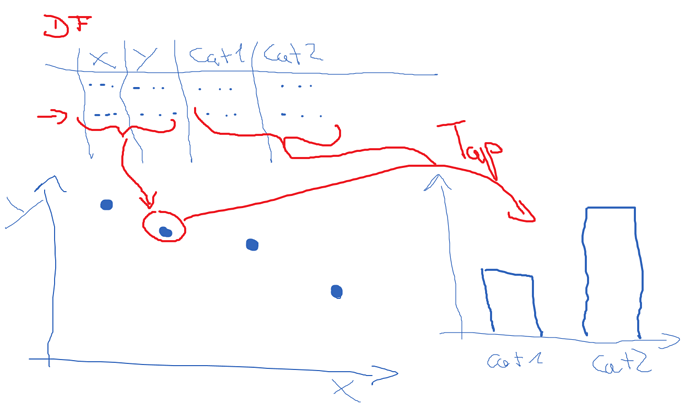Hello and thank you so much for developing Bokeh!
I posted this question also on Stackoverflow:
I have a DataFrame which holds the data I want to plot in a scatter plot. The DataFrame has far more information than only the columns needed for the scatter x and y data.
I want to show the additional data as hover (which is not the problem) but also if I Tap-select one data point in the scatter the additional data in the other columns of the ColumnDataSource shall be plottet in a Bar Plot.
My problem is to get the bar plot to accept the data stored in the one selected row of the ColumnDataSource. Everything I have seen uses column based data to feed it to the bar plot.
I stripped my Problem down to a minimalistic code snippet:
SRC = ColumnDataSource(df)
def Plot(doc):
def callback(event):
SELECTED = SRC.selected.indices
bplot = make_bPlot(SELECTED)
def make_bPlot(selected):
#Here is my question:
#How to feed the row-wise data of the SRC to the barplot?
b = figure(x_range=["cat1", "cat2"])
b.vbar(x=["cat1", "cat2"], top=["cat1", "cat2"], source=SRC)
return b
TOOLTIPS = [
("x", "@x"),
("y", "@y"),
("Category 1", "@cat1"),
("Category 2", "@cat2")]
TOOLS="pan,wheel_zoom,zoom_in,zoom_out,box_zoom,reset,tap"
cplot = figure(tools = TOOLS, tooltips=TOOLTIPS)
cplot.circle("x", "y", source=SRC)
bplot = make_bPlot(None) # init
taptool = plot.select(type=TapTool)
cplot.on_event(Tap, callback)
layout = column(cplot, bplot)
doc.add_root(layout)
